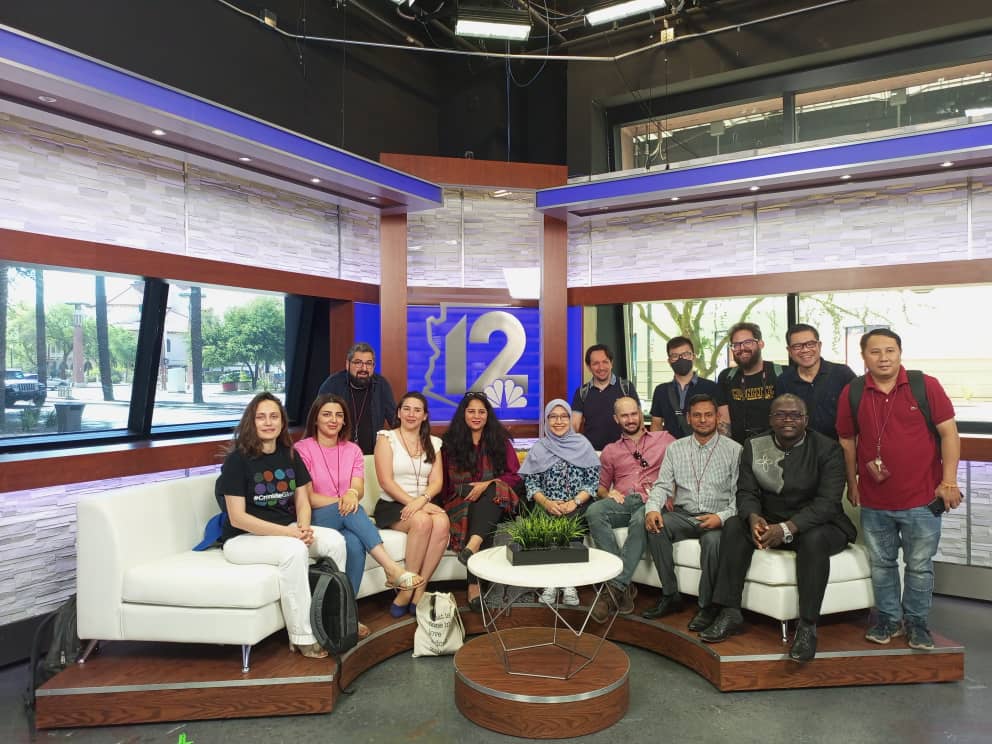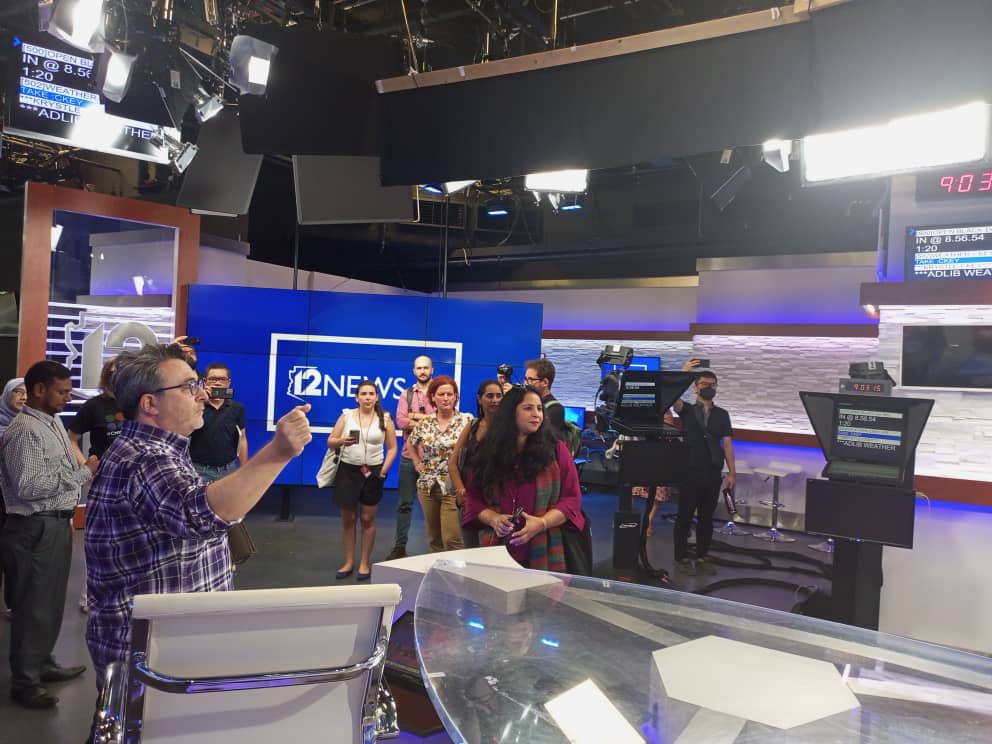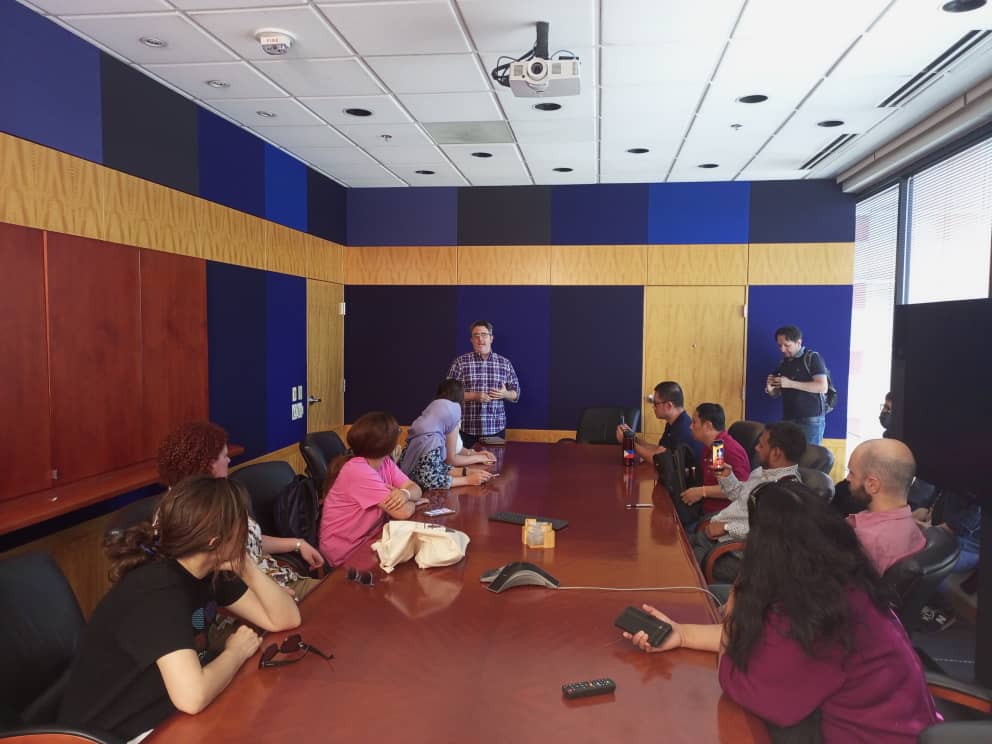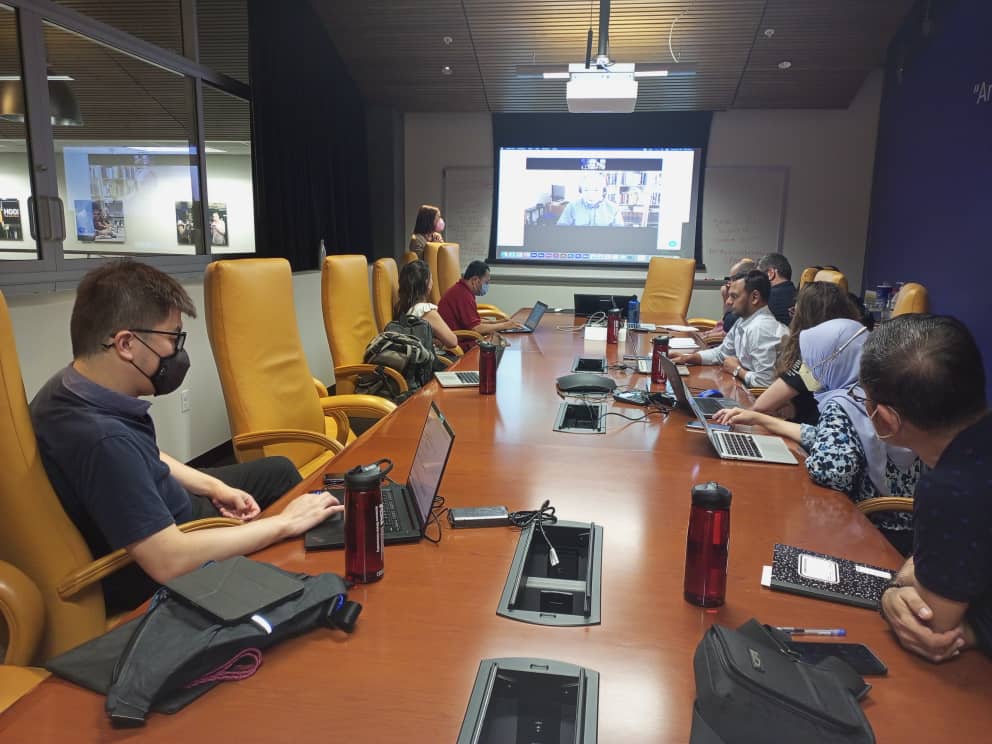I woke up very early this morning: 4 AM. I had to prepare. I couldn’t wait to know what freedom of press is all about in the US in general, and in Arizona in particular. We were to visit professional journalists today and the question was to find out whether the First Amendment is a license to hurt. Is there any limit? If yes, where are those limits? And who limits when and how?
With Dr. Kristy Roschke, we had spent the two previous days discussing issues related to misinformation, disinformation and malinformation. The sacrosanct principle of journalism was that the facts are sacred but the comments are free. Meaning that the same fact could be commented upon differently by different professionals and from different perspectives. Meaning also that a professional could choose to publish just part of the facts depending on their own editorial guideline. Is this fake news? So, I was curious to know how information is processed in the newsrooms in the US and specifically in Arizona.
As if everybody else also wanted to know, we unanimously changed the program a bit the day before. We started the day at 8:50 (on previous days it usually started after 9:00). Everybody was on time… oops! No. I came one minute late with Alam, my roommate (laugh). As we headed out for our first target of the day, I watched Roy’s camera, always ready to capture everything. He told me that he can’t go anywhere without his camera. I was wondering what he would capture today. And then I turned to Bruno. He was the grand reporter of the cohort–but (sadly for me) in Portuguese. I was happy to be there, with new friends. New cultures. New habits. My roommate forgot his sunglasses and his water bottle. We are not used to these things, but everything was ok. It was funny!



Channel 12, here we are! It was our only visit of the day, the local NBC Phoenix affiliate. I read about the owner, TEGNA. To be honest, I was finding who was behind it to measure the credibility of information. Don’t give me that look! My approach is normal. We are trained to combat fake news. I found out that the board was made up of very big people in high-tech and industry. Their editorial guidelines could be in favor of the industrial lobbies. I wanted to check their approach to data processing. Maybe that is why they are prompt to say that their “purpose is to serve the greater good of our communities.” But after a tour of the office, we had a very interesting discussion session in the newsroom about the practice of journalism in Arizona. We finished the day with a casual conversation with Professor Dan Gillmor, who shared his experience with us and expressed his passion for freedom of expression.

At the end of the day, I found out that the limit to press freedom is the audience. But what is interesting in Arizona Common Law is Article 2, Section 6 of the Arizona Constitution. It states that, “Every person may freely speak, write, and publish on all subjects, being responsible for the abuse of that right.” It means that freedom of speech shouldn’t be abused. The question now became knowing what is meant by “abuse”? An opening to political interpretation? The question is still pending. For the rest, I learned a lot about the Reporter’s Recording Guide. I understood that there are restrictions concerning recording an in-person conversation, telephone or electronic communication, including wireless or cellular calls, without consent. I also learned that the use of hidden cameras is forbidden and constitutes a felony in Arizona punishable by law (see Ariz. Rev. Stat. Ann. §§ 13-702, 13-801). But I also noticed that the editorial guidelines are not limited, meaning that an outlet can decide to publish news in full or in part depending on the requirements of its audience.
I then finished my day thinking that fake news can be subjective and that politicians or lobbies can still publish some news with the intention to hurt, depending on their own interests and without punishment. The greatest challenge remains to guarantee freedom of the press and freedom of expression while preserving the moral integrity of citizens. For the moment, the only sanction seems to be the vote of the people, boycotts or public demonstrations, which are all part of the freedom of expression.
“And that’s the way it is…” (Walter Cronkite)
